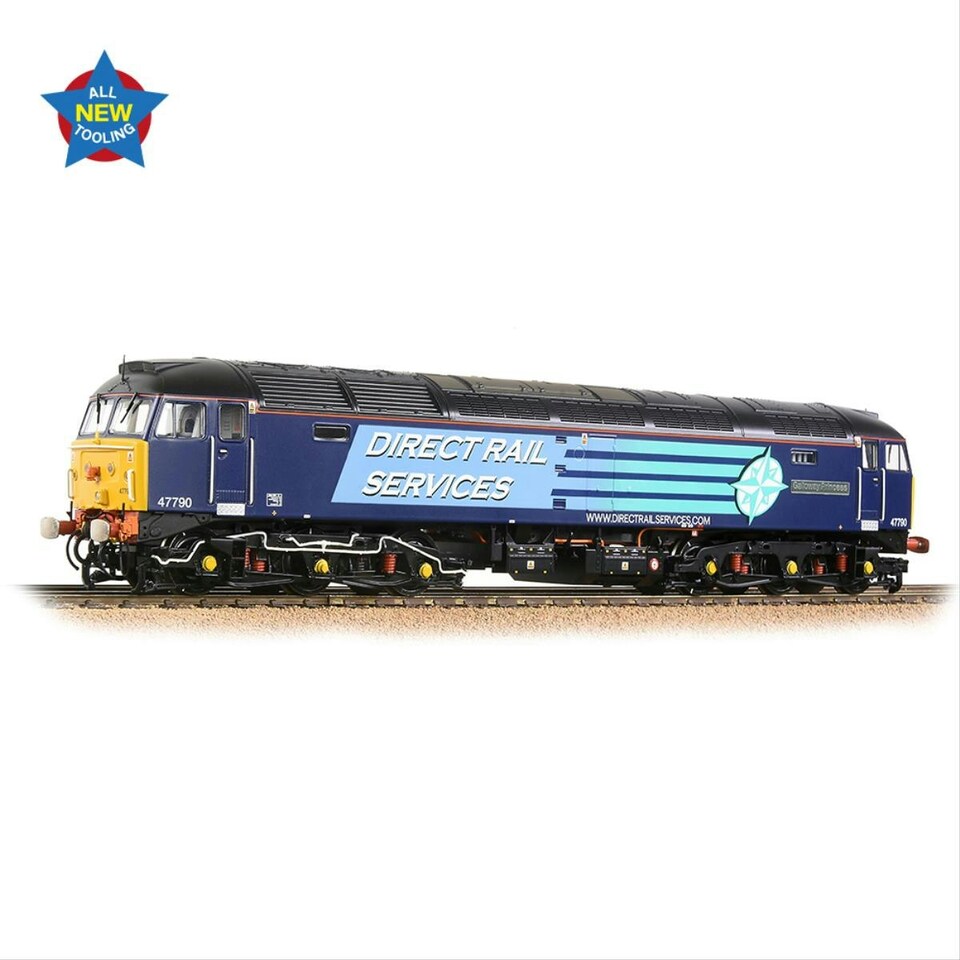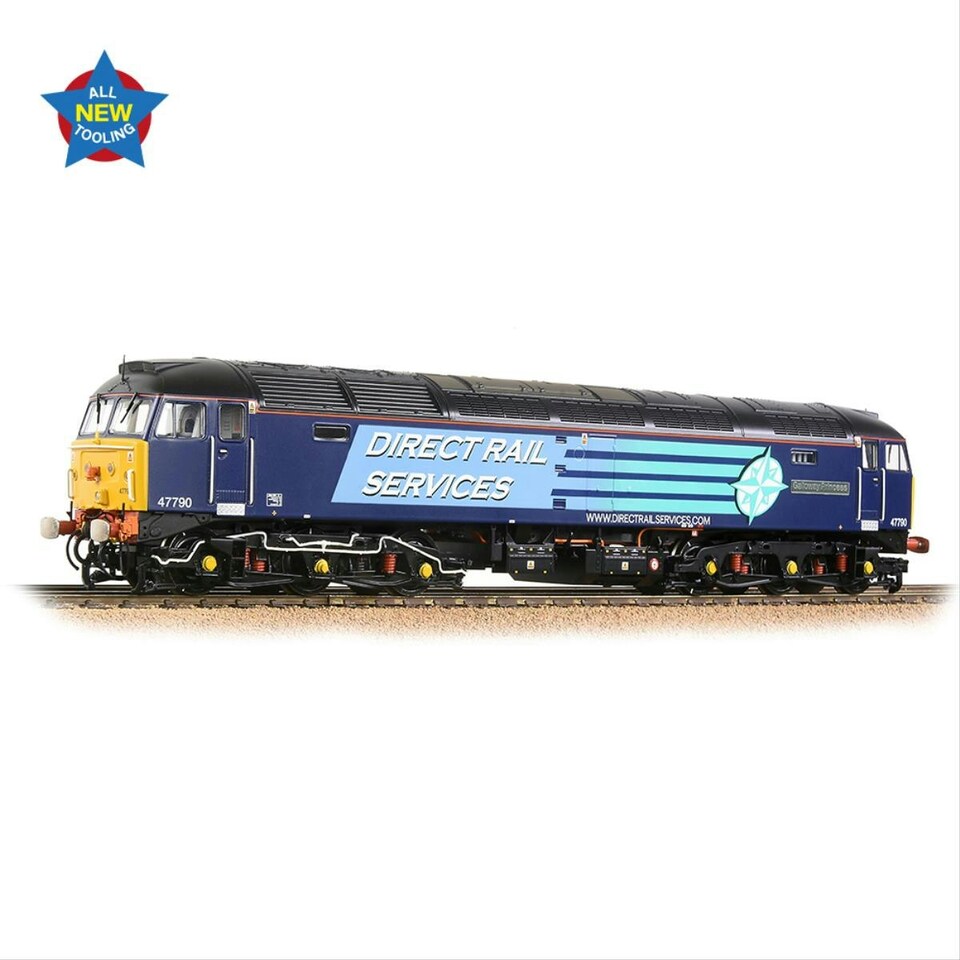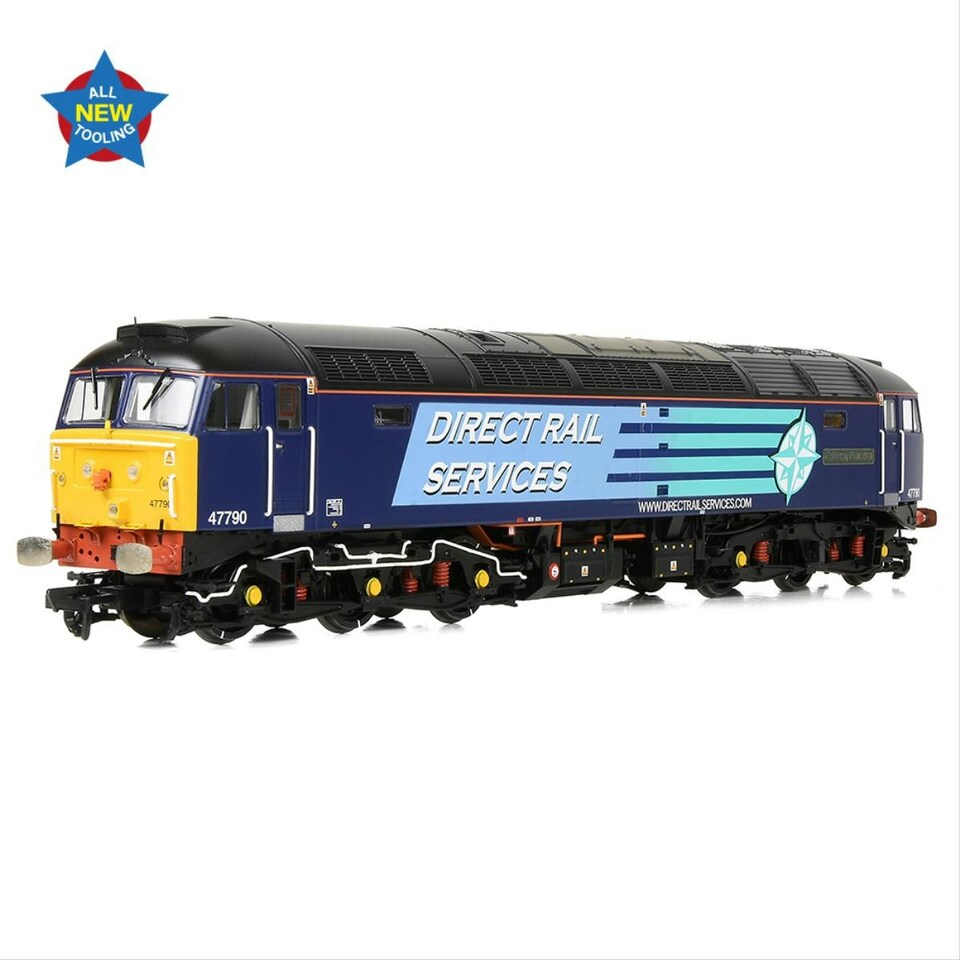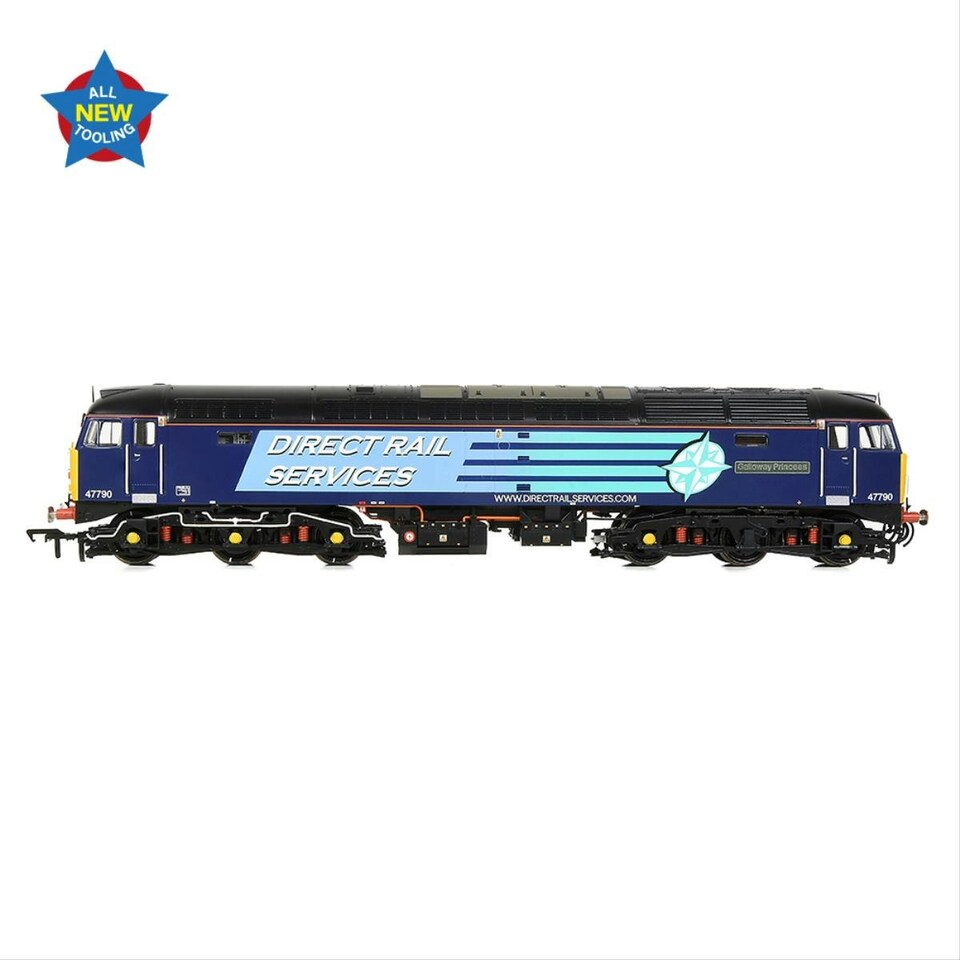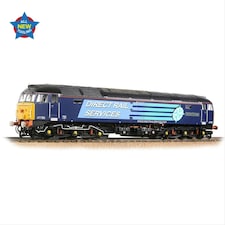Highlights
- Detailed & collectable model railway locomotive
- Authentic & expertly applied DRS livery
- Compatible with Hornby and other OO scale brands
Description
As part of our Spring 2022 British Railway Announcements, we are delighted to present the stunning new Bachmann Branchline Class 47/7 as No. 47790 ‘Galloway Princess’ in original DRS Compass livery.Following the release of the first of the all-new Bachmann Branchline Class 47s in late-2021, we welcome a DRS machine to the range for the first time. With high fidelity mouldings, numerous separately fitted parts and countless tooling variations to capture the minutiae of the real locomotives throughout their lives - ensuring each model is faithful to its prototype – our new 47 is brought to life with an exquisite livery application using true-to-prototype colours, fonts and logos. Along with an unprecedented array of lighting features, our new Dual Fitted speaker system is fitted to all models, bringing to life our SOUND FITTED models. For the ultimate experience, choose our SOUND FITTED DELUXE models with their ground-breaking motorised radiator fans and authentic tinted windscreen glazingBachmann Branchline OO ScaleEra 9Pristine DRS Compass (Original) liveryNamed ‘Galloway Princess’Running No. 47790Etched Nameplates includedEquipped with a Plux22 DCC Decoder Socket – recommended Decoder item No. 36-570Length 255mmDETAIL VARIATIONS SPECIFIC TO THIS MODELPlated Headcode Panels with Sealed Beam Marker LightsCut-Cab LocomotiveBufferbeam-mounted ETH EquipmentMultiple Operation Jumper SocketsSingle Arm Windscreen WipersHigh Intensity HeadlightRectangular BuffersChecker Plate Kickplate below Cab DoorPartially-plated Cab Roof VentsSerck Radiator GrillesRibbed Exhaust PanelsBlanked Roof Boiler PortLater Extended Range Fuel TanksNRN AerialsPlated Bogie-mounted Cab StepsSlow Speed Speedo Drive (fitted at the No. 2 End)MECHANISM:Five pole, twin shaft motor with two flywheels providing drive to both bogiesAll axle driveElectrical pickup from all wheelsSeparate metal bearings fitted to each axleDiecast metal chassis block and bogie towersDiecast metal gearboxes, with gearing arranged for prototypical running speeds and haulage capabilities5mm (OO gauge) wheels to NEM310 / NEM311 standards with authentic profile and detailingDetachable coupling pockets to NEM362 standards fitted to each bogieDesigned to operate on curves of second radius (438mm) or greaterDETAILING:Bogies constructed from multiple components featuring full relief detailRotating radiator fans, driven by an independent motor and gearbox, operated via a DCC function, or randomised when operated as part of the sound project on DCC and Analogue control (SOUND FITTED DELUXE models only)Tinted windscreen glazing (SOUND FITTED DELUXE models only)Separately applied metal detail parts, including grab handles, windscreen wipers and etched fan grillesSprung metal buffersEach model supplied with a full set of decorated, model-specific bufferbeam pipework and accessory partsLIGHTING:Directional lighting, switchable on/off at either end on DCC or Analogue controlCab lighting , assigned to two DCC functions for separate switching of eachSeparately switched Engine Room lighting ( when used on DCC)Authentic light colours and temperatures selected for each model based on era and applicationDCC:Plux22 DCC decoder interfaceLIVERY APPLICATION:Authentic liveries applied to all modelsMultiple paint applications employed on each model using BR specification coloursLogos, numerals and text added as appropriate using multi-stage tampo printing using authentic typefaces, logos and coloursCLASS 47 HISTORYTowards the end of the 1950s, British Railways began planning a new fleet of diesel locomotives and after investigating several prototypes, BR decided to place an order with Brush Engineering for 20 locomotives during February 1961. The resulting design became the iconic Brush Type 4 Diesel locomotive, a practical, versatile design with a very distinctive cab. Powered with a Sulzer engine and initially rated at 2,750hp, the locomotive could achieve a top speed of 75mph with a tractive effort of 55,000lb. Building commenced in January 1962 and the first locomotive No. D1500 appeared in late September of the same year with test runs on the London Midland Region and Western Region. The design was a success and BR went on to order a total of 512 with continuous production through to early 1967, forming the largest single class of main-line diesel locomotives in the UK.During this time and subsequent years, several variations appeared with an increase in speed and tractive effort to 95mph and 62,000lb respectively. Originally fitted with four character train reporting head-codes, these changed to marker lights, with the addition of high intensity lights and roof aerials in the late 1980s. Other variations involved the fitting of different types of steam heating boiler for early BR coaching stock, later replaced with electric train heating for use with modern rolling stock. The numbering system started with four figures but changed to five with the introduction of the TOPS coding system which saw the locomotives classified as Class 47 Diesels with variations such as 47/0, 47/2, 47/3, 47/4 and 47/7. By the end of the 1990s, half of the Class 47 fleet had been withdrawn or scrapped, 33 have been converted into Class 57 locomotives and several have been preserved, including the original No. D1500, now numbered 47401.
Sold by Gaugemaster Controls Ltd (GAUGEMASTER CONTROLS LIMITED)
